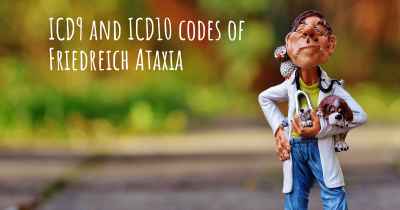What are the latest advances in Friedreich Ataxia?
Here you can see the latest advances and discoveries made regarding Friedreich Ataxia.

Friedreich Ataxia (FA) is a rare genetic disorder that primarily affects the nervous system, leading to progressive loss of coordination, muscle weakness, and other debilitating symptoms. While there is currently no cure for FA, significant advancements have been made in understanding the disease and developing potential treatments. These recent breakthroughs offer hope for improved management and potentially even a cure in the future.
1. Genetic Research:
One of the major advances in FA research has been the identification of the specific gene responsible for the disease. In 1996, scientists discovered that a mutation in the FXN gene leads to the production of a faulty protein called frataxin. This breakthrough has paved the way for further investigations into the underlying mechanisms of FA and potential therapeutic targets.
2. Frataxin Replacement:
Frataxin is crucial for the normal functioning of mitochondria, the energy-producing structures within cells. Researchers have been exploring various approaches to restore frataxin levels in FA patients. One promising avenue is gene therapy, where the faulty FXN gene is replaced with a healthy copy. Recent studies have shown success in increasing frataxin levels in animal models, offering hope for future clinical trials.
3. Antioxidant Therapies:
FA is associated with increased oxidative stress, which damages cells and contributes to disease progression. Antioxidant therapies aim to counteract this oxidative damage and potentially slow down the disease. Recent studies have investigated the use of antioxidants, such as idebenone and resveratrol, in FA patients. These treatments have shown some promising results in improving cardiac function and reducing disease progression.
4. Mitochondrial Biogenesis:
Another area of research focuses on enhancing mitochondrial biogenesis, the process by which new mitochondria are formed within cells. By promoting the growth of healthy mitochondria, researchers hope to compensate for the dysfunctional ones in FA patients. Several compounds, such as bezafibrate and nicotinamide riboside, have shown potential in increasing mitochondrial biogenesis and improving cellular function in FA models.
5. Symptomatic Treatments:
While efforts are being made to develop disease-modifying therapies, managing the symptoms of FA remains crucial for improving the quality of life for patients. Recent advancements in physical and occupational therapies have helped individuals with FA maintain mobility and independence for longer periods. Assistive devices, such as orthopedic supports and mobility aids, have also been developed to alleviate some of the physical challenges faced by FA patients.
6. Clinical Trials:
Advancements in FA research have led to the initiation of several clinical trials to test potential therapies. These trials aim to evaluate the safety and efficacy of various treatments in FA patients. Participating in clinical trials provides patients with access to cutting-edge treatments and contributes to the overall understanding of the disease.
In conclusion, recent advances in Friedreich Ataxia research have provided valuable insights into the disease's genetic basis and potential treatment strategies. From gene therapy to antioxidant therapies and mitochondrial biogenesis, scientists are making significant progress in developing targeted therapies for FA. While a cure is yet to be found, these advancements offer hope for improved management and a brighter future for individuals living with Friedreich Ataxia.








